On this page: SpaceX | Falcon | 2024 Mishap | Falcon Heavy | Raptor | SpaceX and NASA | SpaceX Human Spaceflight | Crew Dragon Flights | Cargo Dragon | ISS Deorbit | | Facilities | Starlink | Starshield | Starman | Launch Platforms | Starship | Mars
Index to SpaceX pages at Astra's and the main Starship page.
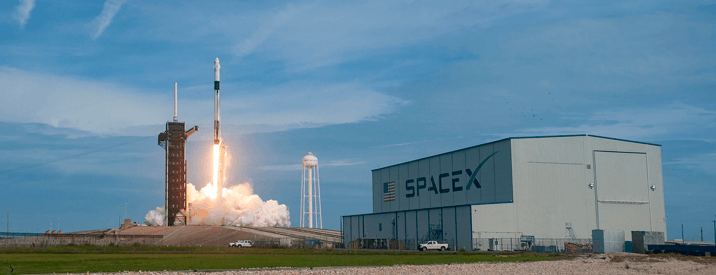
Space Exploration Technologies Corporation aka SpaceX
SpaceX was founded in 2002 by Elon Musk with the goal of reducing space transportation costs to enable the colonization of Mars. SpaceX is headquartered in Hawthorne, CA, with plans to move to Texas. Elon got rocket engineer Tom Mueller (retired 2020) to join his team, and many others including current SpaceX President and Chief Operating Officer, Gwynne Shotwell.
Elon Musk and SpaceX have accomplished many great things in space development. Indeed, the progress toward Elon's stated goal of sending a mission to Mars continues to move forward. Starting in 2005, SpaceX began developing the Falcon rocket. To cut the cost of launching payloads, the Falcon rocket was intended to be reusable early in its development. More information on the development of the Falcon rocket and other SpaceX accomplishments can be found on this page. After Falcon 9 became a success, SpaceX built an International space Station (ISS) cargo vehicle, Cargo Dragon, that has launched many ISS resupply missions. On May 30, 2020, a human-rated Dragon spacecraft named Endeavour launched the first astronauts from the U.S. since the closure of the Space Shuttle program in 2011.
On September 15, 2021, the Inspiration 4 civilian mission was launched on a Falcon 9 rocket. The crew spent 3 days in space, orbiting the Earth in SpaceX's Crew Dragon. Read about Inspiration 4 mission on Astra's Citizens in Space page. In August 2024, SpaceX plans to launch the Polaris Dawn space mission also covered in depth here at Astra's Stargate. SpaceX has even developed it own space suits!
Keep reading to get more in depth information on SpaceX and Starship.
Just for fun, read Astra's "7 Signs You Might be Becoming a SpaceX Boy"
Give Astra's Stargate a Like!
#AstrasStargate #ImaRocketFan
Falcon the Reusable Rocket
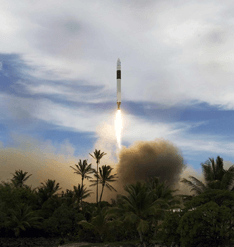
SpaceX developed the first privately funded liquid-fueled rocket to reach orbit, the Falcon 1. The name was derived from the Star War's fictional spacecraft, the Millennium Falcon and the number of rocket engines. Because it had 1 Merlin engine, the first iteration of the Falcon rocket was the Falcon 1. After 3 failures, the rocket was launched on September 28, 2008 from Omelek Island part of the Marshall Islands in the Pacific Ocean. The Falcon 1's first stage completed its burn 2.5 minutes after liftoff. The first stage booster separated from the rocket 5 seconds later. The second stage engine fired, putting the rocket into a circular orbit about 400 miles up. It released a dummy payload called, "Ratsat", weighing in at 364 pounds. SpaceX became the first private company to successfully launch and orbit a rocket.
Falcon 1 was 70 feet tall and capable of lifting 670 kilograms (1,480 lbs.) to low Earth orbit. It weighed 61,000 pounds, and delivered 78,000 pounds of thrust. SpaceX was the first privately developed liquid-fueled rocket to put a commercial satellite in orbit, launching RazakSAT on a Falcon 1 on July 14, 2009. This feat was followed up by the first launch of a satellite into geosynchronous orbit (SES-8) by a commercial entity on December 3, 2013.
At first, SpaceX was set to develop Falcon 5 that used 5 engines, but instead they proceeded to develop the Falcon 9 that uses 9 engines. On June 4, 2010, SpaceX successfully launched the Falcon 9 v1.0 rocket from Space Launch Complex 40 at Cape Canaveral, FL. The rocket was 227-feet high and capable of generating 1,125,000 pounds of thrust at sea level and 1,250,000 pounds of thrust in the vacuum of space. Originally the rocket was to be launched on the 3rd, but a rainstorm dropped 3 inches of water on June 3. The SpaceX team had to take action! A team member climbed to the top of the rocket, discovering that water had entered the rocket's electronics. Using a hair dryer, the electronics and antennas were dried out and the compartment resealed.
From the very beginning Elon Musk wanted to decrease the cost of launching payloads into space by reusing the rocket's hardware. In future flights the first stage would be retrieved from the Ocean, landing smartly on a platform. (The first landing of Falcon 9 on December 2015 touched down on land.)
Merlin Engine
The Falcon rocket is powered by SpaceX Merlin engines that use RP-1 and liquid oxygen as propellants in a gas-generator power cycle. From the first, the Merlin engine was designed for sea recovery and reuse. The first version of the engine, Merlin 1A, used a carbon-fiber-reinforced polymer composite nozzle, and could produce 376,000 lbs. of thrust. It successfully flew only once on March 21, 2007. The next version, the Merlin 1B, was never flown. The Merlin 1C was a significant improvement over the earlier versions. There were 3 different versions of the Merlin 1C engine. The first was used for the Falcon 1 rocket's first stage, but the second stage used the SpaceX Kestral engines for use in the vacuum of space. The Kestral is no longer in production. The third version of Merlin 1C works in a vacuum on the Falcon 9 second stage.
Grasshopper
Grasshopper was a rocket prototype that SpaceX used to test and develop their reusable rocket technology. For 2 years, SpaceX launched the first stage of the Falcon 9 rocket at its test facility in McGregor, Texas. During the first test flight on September 21, 2012, Grasshopper made a mere six-foot hop. Subsequent launches used progressively higher hops and executed controlled landings until SpaceX achieved pinpoint accuracy to land their rockets. The goal was to land the Falcon 9 and reuse it for future launches, reducing the cost of transportation to space.
For each hop, SpaceX studied Grasshopper rocket flights with surveillance aircraft, gathering data and developing their systems. Using the various hop tests, SpaceX developed its ability to fly back against wind gusts, move sideways in the air, and reach the target. Navigational sensors enabled the precision landings. The 4 steel legs, hydraulic dampers, and support structures had to withstand the stress of landing. Grasshopper landed on solid ground while the Falcon 9 rocket had to land on a floating platform. By April 2014, Grasshopper was rising 820 feet or 250 meters and making better landings.
On August 14, 2013, Grasshopper rose 820 feet executed a 328-foot lateral movement, returning to the pad. During the last flight on October 13, 2013, Grasshopper rose 2,441 feet and landed smartly back down on the pad, about 79 seconds later. The tests on Grasshopper stopped so that SpaceX could concentrate on Falcon 9 development.
Falcon 9 was the first launch vehicle to reach orbit trajectory and vertically-land the first stage, recovering the rocket and engines successfully. Falcon 9 Full Thrust first launched in December 2015 and had flown 83 times by December 2020. In 2017, SpaceX reused its first-stage booster and also successfully recovered it.
Although SpaceX was not the first aerospace organization to work toward reusable rockets, they are the most successful to date.
Recovering the Falcon Rockets - Reusability!
The first flight of Falcon 9 with a successful first-stage recovery was launched on December 21, 2015. The first stage landed at Cape Canaveral Space Force Station in landing zone 1. The era of rocket re-usability had begun.
The Falcon 9 first stages are recovered after launch by droneships on the ocean. The droneships are named "Just Read the Instructions" and "Of Course I Still Love You". The image below shows the recovery drone in the Pacific Ocean. This was the 15th successful landing of a Falcon 9 first stage in 40 liftoffs, and the ninth one that land on a ship.
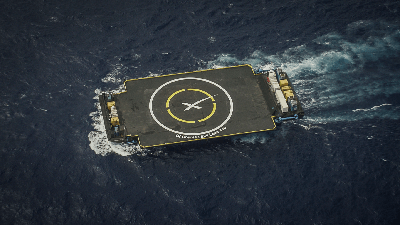
On February 16, 2021, SpaceX failed to recover a first stage of Falcon 9 after launching its own Starlink internet communication satellites. This was the first landing failure since March 2020. At that time SpaceX had a string of 24 successful Falcon 9 first stage recoveries. Since then SpaceX has recovered well over 100 returning boosters. This is a testimony to the level of success the organization has achieved toward reusability.
In July 2021, SpaceX launched a new drone recovery ship, "A Shortfall of Gravitas" that will be operating in the Atlantic Ocean. This new ship should help SpaceX keep up with its robust launch schedule.
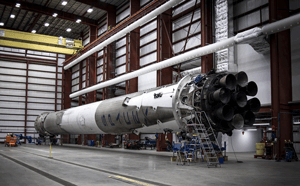
Falcon, the reusable rocket has achieved many milestones after so many years of service. On February 20, 2024, Falcon 9 launched the Merah Putih-2 telecommunications satellite from Cape Canaveral, Florida, making its 300th successful mission. Later the same day, a Falcon 9 rocket (#1061) was launched with a Merlin engine that had flown on 22 missions! On June 12, 2023, Falcon 9's flight #232 marked the 200th first stage booster landing.
Falcon 9 Starlink 9-3 Mission Failure
Return to flight
Falcon 9 flies again!
On July 27, 2024, SpaceX was given permission to resume flights. The joint SpaceX/FAA mishap investigation discovered the cause of the failure was a crack in a pressure sensor line that was attached to the vehicle’s oxygen system. Fatigue caused the line to crack. When the upper stage engine was restarted to circularize the orbit for satellite insertion, the engine suffered a hard start. The explosion caused the spacecraft to lose attitude control although the Starlink satellites were deployed.
The solution that allowed SpaceX to return to flight quickly (16 days) was to remove the failed sense line and sensor on the second stage engine for near term Falcon launches. The sensor was evidently not used by the flight safety system and other sensors can perform its task. The change was tested at SpaceX’s facility in McGregor, Texas. This included FAA oversight and qualification analysis.
Falcon 9 flights resumed on Saturday, July 27 at 1:45 a.m. ET. SpaceX launched 23 Starlink satellites to low-Earth orbit from NASA’s Kennedy Space Center in Florida.
+ + Read about Falcon 9's Return to flight on SpaceX's update page dated July 25, 2024.
☆ ☆ ☆
Mishap
On July 11, 2024, Falcon 9 launched with 20 Starlink satellites (Starlink Group 9-3) from Vandenberg Space Force Base. The first stage booster performed well and was able to return to Earth and land on a droneship. The second stage vacuum engine was to burn two times, once after separation, and a second time to raise the satellites to their final orbit. The first burn was successful, but the rocket developed an oxygen leak. When the stage was relit there was an explosion.
The spacecraft was still able to deploy the satellites although they were released in an eccentric orbit with a perigee of 135 km, far below the intended 286 km. This means the lowest point in the orbit was deeper into Earth's atmosphere and where drag would destroy the satellites. Although SpaceX tried to use the Starlinks' maneuvering thrusters, they were not powerful enough to raise them into the proper orbit. All Starlink satellites were lost. The mishap ended Falcon 9's launch streak at 364 successful Falcon launches.
While the first stage booster is fully reusable, the second stage is not returned to Earth. It is expendible like most rockets. It was a brand new piece of equipment and one that has proven to have a high reliability. The Federal Aviation Administration's (FAA) has called for SpaceX Falcon 9 flights to be suspended pending a mishap investigation. SpaceX will determine the cause and submit a plan to prevent future problems.
On July 15, SpaceX requested that the FAA allow launching of uncrewed Falcon 9 flights during the mishap investigation.
Human flight schedules affected by the mishap:
SpaceX/NASA Crew-9 mission is now scheduled no earlier than August 18, 2024.
Polaris Dawn Mission scheduled for July 31, now launching before the end of Summer of 2024.
☆ ☆ ☆
Scott Manley made an excellent video describing the mishap and is worth reviewing. Find it on YoutTube at: Propellent Leak Ends SpaceX's Launch Record at SpaceX.
+ + Check the details of the July 11, 2024 Starlink Mission at SpaceX.
SpaceX Falcon Heavy
SpaceX and Elon Musk could not stop after the success of Falcon. SpaceX continued upscaling by developing the Falcon Heavy. The core of Falcon Heavy is a beefed up version of the Falcon rocket that carries the payload in its fairing. Two additional Falcon Rockets are attached on either side of the core Falcon. Each of the three rockets are powered by 9 Merlin engines for a total 27 engines. The Falcon Heavy can generate more than 5 million pounds of thrust at liftoff. Falcon Heavy is the most powerful operational rocket in the world. It can lift nearly 64 metric tons (141,000 lbs.) into orbit. Falcon Heavy stands 70 meters (~230 ft.) tall and is 12.2 meters (~40 ft..) in diameter.
Falcon Heavy's maiden launch came on February 6, 2018. It carried a Tesla Roadster belonging to SpaceX founder Elon Musk, with a dummy dubbed "Starman" in the driver's seat, a real dummy payload. The second Falcon Heavy launch took place on April 11, 2019. All three booster rockets successfully returned to Earth. Two of the recovered boosters were used by SpaceX on the Falcon Heavy's third flight. The payload it carried was the Arabsat-6A geostationary communications satellite. The third successful Falcon Heavy launch came on June 25, 2019.
This mission helped SpaceX to get certified by the U.S. Air Force National Security process for future launches. A fourth launch took place in November 2022, a classified mission for United States Space Force. For this mission there is no plan to reuse the main core Falcon rocket, but the two side boosters will be collected from the ocean. Other launches are planned for 2023 and beyond.
For more details on Falcon Rockets, download the Falcon User's Guide at SpaceX.
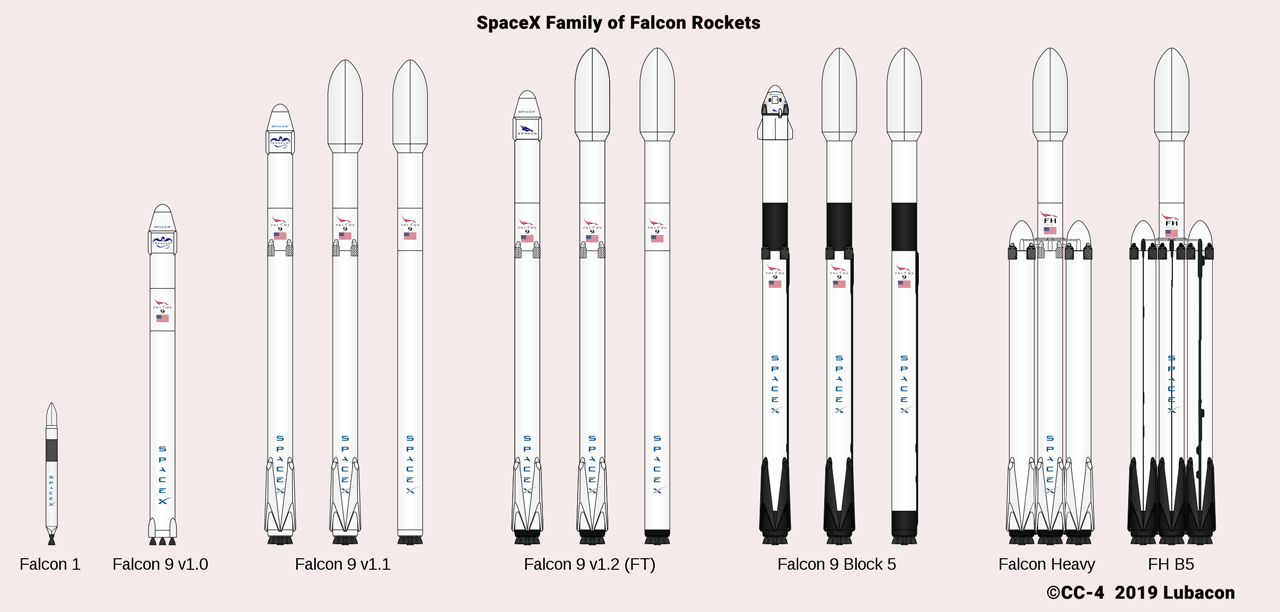

Elon Musk has a true desire to launch humans to Mars. (Himself included, of course!) The Falcon success was not enough - - it is a stepping stone to gain expertise and earn revenue to develop a rocket and spacecraft that is up to the task of bridging the long distance to Mars. SpaceX is growing a whole new rocket booster and second stage in preparation for lunar landing and then on to Mars.
SpaceX Starship/Super Heavy
Falcon Super Heavy is the booster that is intended to take the SpaceX Starship to the Moon, Mars, and beyond. This behemoth is the most powerful rocket on Earth today, although it still must prove its strength. On April 20, 2023, the Falcon SuperHeavy Booster #7 was launched, carrying the Starship on the first integrated flight test. Although the SuperHeavy showed what it could do, the upper stage, Starship SN24 was not able to separate successfully. Through more test flights, SpaceX was able to improve the design and is now planning to attempt to catch the booster with the Boca Chica launch tower.
+ + find out about the first integrated test flight of SpaceX's Starship at Astra's Stargate
Raptor Engines
The Falcon Super Heavy and Starship are powered by SpaceX's Raptor Engines that are still being developed. The latest Raptor 2.0 design is vastly improved over the previous version and Raptor 3 is beginning production. SpaceX has three Raptor variants: sea level engine with gimbal, sea level engine without gimbal, and vacuum level engine without gimbal.
Raptor engines use a rocket technology that is called Full-flow Staged Combustion Cycle (FFSC) that uses cryogenic liquid methane and liquid oxygen. FFSC is a combustion cycle that uses both oxidizer-rich and fuel-rich preburners. The cycle allows full flow of both liquids through separate turbines and does not dump unburnt propellant overboard. Variants of this system have been attempted, but SpaceX's Raptor is the only one that has managed to take a mass into space. Raptor engines are intended to be fully reusable and will be returned to Earth on the SuperHeavy booster.
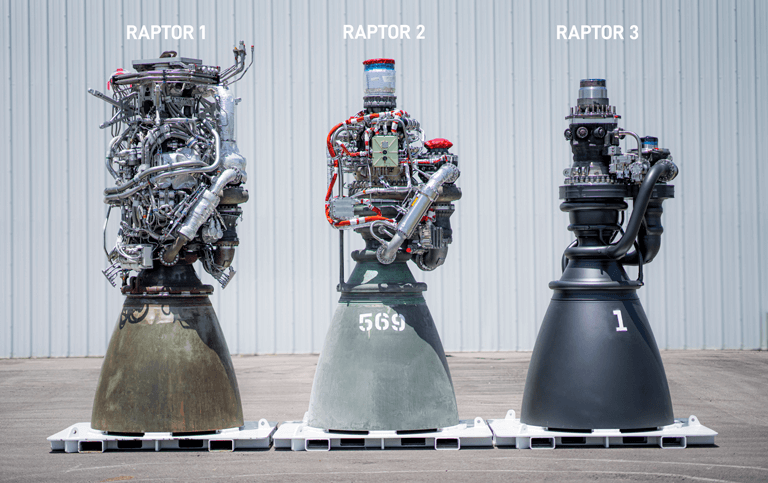
Read more about Raptor Engines on Astra's SpaceX page

SpaceX and NASA
The relationship between SpaceX and NASA began when NASA's Commercial Crew and Cargo Program Office (C3PO) released the first Commercial Orbital Transportation Services (COTS) in 2006. SpaceX was already working on the Falcon 9 and had been conceptualizing its Dragon spacecraft. Among the 20 applicants, SpaceX's work on the Falcon rocket, technical expertise, and business plan made SpaceX a strong candidate. Unlike typical cost-plus government contracts, the COTS program operated under Space Act Agreements (SAA). This system makes the non-government entity a "partner" of NASA rather than a contractor. It also means that NASA will not share the partner's information and that the data collected remains the property of the partner. The SAAs stipulate milestones to be completed by the commercial partners. Milestones are usually financial, engineering reviews, engine tests, hardware delivery, and launch demonstrations. These details are agreed upon by NASA and SAA partners. Under the COTS program, SAA partners were required to match the funds provided by NASA. During launch demonstrations, NASA also used its equipment to assist SpaceX in the observation of their vehicles' test flights.
On August 18, 2006, NASA awarded SpaceX a COTS Space Act Agreement worth $278 million, paid in increments as milestones were completed successfully, to develop the capability to deliver and return cargo to and from low-Earth orbit.
Under the SAA, SpaceX worked closely with NASA to meet many challenges. The company had to learn how to build and verify its hardware to meet the International Space Station (ISS) requirements. It had to pass the ISS Safety Review before the first full demonstration mission. When SpaceX opened a new facility in Hawthorne, CA, NASA insisted the company fix some issues with the SAA funds. NASA also helped with other production capabilities to improve SpaceX's manufacturing processes. When SpaceX wanted to combine some milestones, NASA had to approve the changes.
It must be said that the SpaceX path to space was not easy street. The first launch of Falcon 1 on March 24, 2006 ended in a massive explosion within the first minute of liftoff. About a year later, the rocket launched and dropped off the first stage, but the second stage stopped working after 7 minutes. A third failure on August 3, 2008 occurred when the first stage continued to move upward after separation and smashed into the second stage. Elon Musk has stated that SpaceX would have been bankrupt if the Falcon 1 mission on September 28, 2008 had failed.
Cargo Dragon - ISS Resupply
Building a space-worthy vessel was also a goal for SpaceX. Elon Musk named it, Dragon after a childhood favorite, "Puff the Magic Dragon." According to SpaceX, "The Dragon spacecraft has 16 Draco thrusters used to orient the spacecraft during the mission, including apogee/perigee maneuvers, orbit adjustment and attitude control. Each Draco thruster is capable of generating 90 pounds of force in the vacuum of space."
Another impressive achievement, SpaceX developed the "Dragon" Cargo vehicle under NASA's Commercial Orbital Transportation Services (COTS) program. The first demonstration flight was launched on December 8, 2010. The objectives for this mission were to test the orbital maneuvering and reentry of the Dragon capsule. Before the test could be launched, however, SpaceX had to get a license for spacecraft re-entry from the Federal Aviation Administration's (FAA) through the Office of Commercial Space Transportation for the flight. It was the first vehicle re-entry license issued to a private enterprise!
The Falcon 9 was launched successfully and carried the first SpaceX Dragon spacecraft to orbit. The Dragon vehicle separated from the rocket about 9.5 minutes later, achieving a near circular orbit, with a perigee of 288 km (179 mi), an apogee of 301 km (187 mi) at 34.53 degree of inclination. After completing 1 orbit, it successfully reentered, splashed down, and was recovered.
SpaceX met 40 total milestones of the SAA in May 2012, when it successfully launched its final COTS mission, sending Cargo Dragon to the International Space Station.
Dragon has a recoverable capsule and disposable "trunk" for unpressurized cargo. The vehicle is capable of carrying 13,228 pounds to low-Earth orbit and returning 6,614 pounds from low-Earth orbit. The spacecraft uses 12 to 18 Draco thruster engines. It has a Phenolic Impregnated Carbon Ablator (PICA) thermal protection system to protect the capsule during reentry through Earth’s atmosphere.
As of the end of December 2020, the Cargo Dragon was launched by the Falcon rocket 22 times. An updated version of the Cargo Dragon (Cargo Dragon2) was also developed by SpaceX.
Launching Humans to Space - Crew Dragon
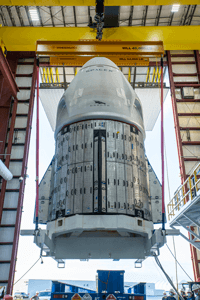
Building on its success with the Cargo Dragon, SpaceX continued to develop the Dragon spacecraft. Under the Space Act agreement, SpaceX worked closely with NASA to ensure that the human-rated Crew Dragon would be safe for humans to travel into space.
A very important system for the flight of humans into space is the Environmental Control and Life Support System or ECLSS (pronounced ec-liss) and is the crucial life support system of the Crew Dragon and other spacecraft. Life support must control temperature, carbon dioxide levels, oxygen levels, and cabin pressure. The system includes controls, machinery, pipes, tanks and sensors that provide astronauts with air and other essentials during spaceflight missions. It must function properly for the entire mission from lift-off to landing. The Crew Dragons ECLSS system was extensively tested by engineers at NASA. The life support system is so important that SpaceX built a prototype specifically for testing by NASA.
Crew Dragon has set itself some new records, including the Crew-1 and Crew-2 spacecraft docked at the International Space Station at the same time. The human-rated Crew Dragon spacecraft can dock directly to the space station and remain ready in place to protect crew should a quick departure from the station be required.
Did you know that SpaceX conducts its own human spaceflight missions?
In addition to working with NASA to launch humans to the International Space Station, Crew Dragon was the home for civilian astronauts during the Inspiration 4 mission. Read about it on Astra's Citizens in Space Page.
In February 2022, Jared Isaacman announced the Polaris Program, consisting of three human spaceflight missions. This is an exciting program where SpaceX works with private citizens to explore space. The first mission is called Polaris Dawn and will be tentatively launching in December 2022. Two SpaceX employees, Sarah Gillis, and Anna Menon, will fly aboard the Polaris Dawn Mission as mission specialists. The mission will be commanded by Jared Isaacman and the Crew Dragon will be piloted by Scott Poteet.
Check out more on the Polaris Dawn mission page at Astra's where the program will be discussed as well as the spacesuits that are being developed by SpaceX for human spaceflight aboard Starship.
In August 2024, SpaceX announced its sixth commercial astronaut mission, Fram2. This mission is intended to be the first human spaceflight mission to explore Earth from a polar orbit. For the first time, astronauts will fly over the Earth’s polar regions. Check out the Citizens in Space page at Astra's for more information on Fram2.
SpaceX / NASA Crew Missions
SpaceX supports the USA space program with launches of the Crew Dragon. Astronauts are taken to the International Space Station on reusable Crew Dragon spacecraft. The Dragon spacecraft is parked at the station and becomes an emergency evacuation vehicle until it returns crew members to Earth. The Dragon splashes down in the ocean and astronauts are retrieved.
Crew Demo-2 Mission
The first crewed launch of Crew Dragon on May 30, 2020 carried NASA astronauts Douglas Hurley and Robert Behnken to the International Space Station. This launch was the first crewed space flight launched from the United States since the final Space Shuttle mission in 2011. The United States is back in human spaceflight thanks to a commercial carrier. A fine milestone, indeed.
The first Dragon spacecraft was named Endeavour by the crew. While on the ISS, Robert Behnken worked on the spacestation during 4 spacewalks. Hurley and Behnken spent over 100 hours working on science experiments in the laboratories Endeavour was docked to the ISS for over 62 days, 9 hours and 8 minutes, returning to Earth on August 2, 2020. The Crew Demo-2 mission lasted 64 days.
Crew-1 Mission
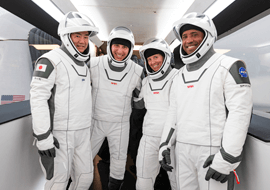
The second launch of Crew Dragon blasted off for the ISS on November 14, 2020 carrying NASA astronauts Victor Glover, Michael Hopkins, Shannon Walker and Japan Aerospace Exploration Agency astronaut Soichi Noguchi. They named the Crew Dragon spacecraft, "Resilience". Crew-1 joined with the three astronauts already on the ISS in Expedition #64. This brought the total of Astronauts on the space station to 7, the maximum number of crew members on a full expedition.
During this expedition, the SpaceX CRS-21 carried NanoRack's Bishop Airlock to the ISS. The Airlock was installed with the CanadArm remotely. Kate Rubins activated the Cardinal Heart experiment shortly after it arrived on the Cargo Dragon.
Crew-2 Mission
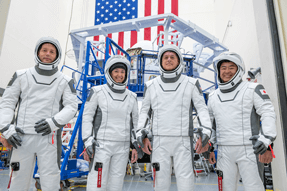
SpaceX Crew-2 mission launched NASA astronauts Shane Kimbrough and Megan McArthur, Akihiko Hoshide (JAXA), and Thomas Pesquet (ESA) astronauts on to the space station on April 23, 2021, bringing the ISS crew complement up to 11 for a short time. The crew named their SpaceX spacecraft, "Endeavour". Meanwhile,Crew-1 in Resilience returned to Earth on May 2, 2021 at 2:56 a.m. May 2. Crew Dragon splashed down by parachute, landing in the Gulf of Mexico near Panama City, FL. This was the first night splashdown from space since Apollo 8 that returned in December 1968.

SpaceX launched NASA’s Crew-3 mission on November 11, 2021. The Crew Dragon carried NASA astronauts Raja Chari, Tom Marshburn, and Kayla Barron, and European Space Agency astronaut Matthias Maurer.
SpaceX launched NASA’s Crew-4 Mission on April 27, 2022. The Crew Dragon spacecraft carried NASA astronauts, Commander Kjell Lindgren, Robert Hines, Jessica Watkins, and European Space Agency astronaut, Samantha Cristoforetti to the International Space Station.
On October 5, 2022 the Crew-5 mission was launched from launch pad LC-39A. SpaceX Crew-5 mission was commanded by NASA astronaut Nicole Mann and piloted by Josh Cassada, JAXA astronaut Koichi Wakata, and Russian cosmonaut Anna Kikina is the first Russian to launch on a Dragon spacecraft.
Just in case you wondered, as I did, Anna Kikina is the only woman cosmonaut in Roscosmos corp.
- - Astra
NASA’s SpaceX Crew-6 mission launched to ISS on March 2, 2023 from Launch Complex 39A at NASA’s Kennedy Space Center in Florida. NASA astronaut, Commander Stephen Bowen, Pilot Warren "Woody" Hoburg, Mission Specialist UAE (United Arab Emirates) astronaut Sultan Alneyadi, and Mission Specialist Roscosmos cosmonaut Andrey Fedyaev docked the Crew Dragon spacecraft, Endeavour to the forward port on the Harmony module of ISS.
SpaceX launched NASA's Crew-7 mission on August 22, 2023 from Kennedy Space Center carrying NASA astronaut, Jasmin Moghbeli, ESA astronaut, Andreas Mogensen of Denmark, Satoshi Furukawa of JAXA , and Roscosmos cosmonaut, Konstantin Borisov to the ISS. Andreas Mogensen will be the first non-American to serve as pilot of Crew Dragon Endurance. The crew launch took off on a SpaceX Falcon 9 rocket from Launch Complex 39A.
SpaceX launched the Crew-8 mission on March 3, 2024, from Kennedy Space Center. NASA Astronauts, Matthew Dominick, Michael Barratt, and Jeanette Epps flew with cosmonaut, Alexander Grebenkin on the Dragon spacecraft Endeavour
Axiom Space Missions to ISS
SpaceX also sent up Crew Dragons carrying crew members for Axiom Space to the International Space Station. To date there have been three Axiom missions with a fourth on the books scheduled later in 2024. A full write up of Axiom Space and the Axiom Missions can be found at Astra's using the links.
| Axiom-1 | launched April 2022 |
| Axiom-2 | launched May 2023 |
| Axiom-3 | launched January 2024 |
- - Check out this NASA blog that covers all SpaceX mission launches.
International Space Station DeOrbit
Even the greatest space missions come to an end. The International Space Station has been orbiting Earth since 1998 and is expected to end its mission around 2030. The ISS has a mass of 925,335 pounds or 19,725 kilograms not counting visiting vehicles. The ISS has living space for six people plus visitors, two bathrooms, a gym, multiple laboratories, and a 360-degree Earth-facing window.
NASA, the Canadian Space Agency, European Space Agency, Japan Aerospace Exploration Agency, and Roscosmos are the main space agency partners that are working together to develop the ISS deorbit plan. Over two decades of operations, astronauts have conducted thousands of experiments in space, and engaged millions of students, and maintained the station that today contains 18 pressurized modules.
On June 26, 2024, NASA announced that SpaceX was awarded a contract valued at up to $843 million to build the deorbit vehicle (DV) that will move the station down toward the Earth so that it will burn up in Earth's atmosphere. The DV will be owned and operated by NASA. The heavy-lift rocket needed to launch the DV has not yet been selected.
To lower the ISS altitude for a controlled re-entry, the DV will carry ~35,000 pounds of propellant and be powered by 46 Draco rocket engines. The vehicle will have an extended trunk section and carry out the deorbit maneuvers. More information will be posted on Astra's Stargate in the near future.

SpaceX Facilities
Hawthorne, California - SpaceX headquarters and manufacturing moving to Starbase, Texas
Space Launch Complex 40 (SLC-40) at Cape Canaveral Air Force Station (CCAFS), Florida, USA
Launch Complex 39A (LC-39A) at John F. Kennedy Space Center (KSC), Florida, USA
Space Launch Complex 4 (SLC-4) at Vandenberg Air Force Base (VAFB), California, USA
Starbase - Boca Chica, Texas, USA
Rocket Development and Test Facility at McGregor, Texas is used for to test the rocket engines delivered from the Hawthorne facility. The site was bought by SpaceX from "Massey's Gun Shop and Range", and it is generally known as Massey's test site. This is where SpaceX conducted its first tests of Grasshopper.
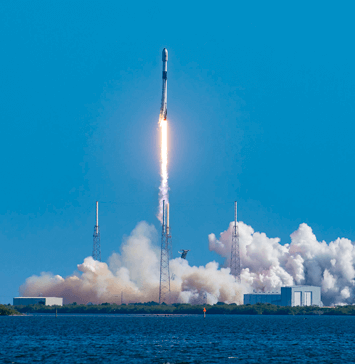
SLC-40 at Cape Canaveral Air Force Station
Space Launch Complex 40 (SLC-40) was built during the 1960's, the US Air Force leased the complex to SpaceX to launch the Falcon 9 rocket in 2007. Due to a failure of Falcon 9 during a static fire test in September 2016, the site was damaged. The complex was repaired and resumed operations in December 2017 for the ISS resupply CRS-13 mission.
Launch Complex 39A
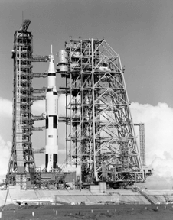
SpaceX leases Launch Complex 39A, the historic pad at NASA Kennedy Space Center in Cape Canaveral, Florida. On November 9, 1967 the first Saturn V launched from Launch Complex 39A carrying the uncrewed Apollo 4 spacecraft into orbit. All rocket stages and the spacecraft were tested on this flight, including the heat shield that would protect astronauts returning from the Moon.
In 2013, when NASA announced that commercial launch providers could lease the launch complex 39A (LC-39A), SpaceX and Blue Origin both bid to use the launch pad. SpaceX submitted a bid for exclusive use of the facility and won. SpaceX built its own facility - the Horizontal Integration Facility (HIF) to house both the Falcon 9 and the Falcon Heavy rockets, associated hardware and payloads, during preparation for flight. Launch vehicles are transported from the Integration facility to the launch pad using the SpaceX Transporter Erector (TE) "Strongback".
SpaceX also had to make modifications to LC-39A, actually installing a new launch pad. The concrete flame trench was reconfigured, so exhaust from the Merlin engines could be directed North of the pad. The ramp that takes rockets to the launch pad was also reworked. Refurbishing the launch pad was expensive and time consuming. SpaceX made a substantial investment to use the historic facility.
The first Falcon 9 launch from pad 39A was SpaceX CRS-10 on February 19, 2017. Other notable flights include the first Falcon Heavy on February 6, 2018, when Elon Musk launched his own Tesla Roadster car complete with a dummy driver, "Starman" and the first humans launched from US soil on the Crew Dragon on May 30, 2020.
But that's not the end of SpaceX's improvements to the Launch Complex 39A area. In December 2021, SpaceX submitted a plan to NASA to develop a second orbital launch site at Kennedy Space Center. The site is being developed quickly, very similar to the site at Boca Chica that I have described in detail below. A second large launch tower called Mechazilla 2 is currently under construction. NASA is worried because the launch site for Starship and Falcon Heavy is only about 1000 feet east of the LC-39A pad because it is necessary to launch Crew and Cargo to ISS. SpaceX is working to reinforce and protect the equipment at LC-39A to prevent any launch mishaps.
SLC-4 at Vandenberg Air Force Base
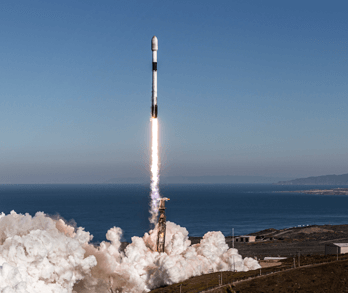
Space Launch Complex 4 (SLC-4) is a launch site at Vandenberg Air Force Base, in California. The complex was built in the 1960's for the launch of Atlas-Agena rockets and later reconfigured for Titan rockets. There are two separate launch pads, SLC-4W and SLC-4E, that were leased by SpaceX to launch the Falcon 9 rocket. Today, the SLC-4E pad is used to launch Starlink satellites on the Falcon 9 B5 rocket, but is also used to launch customer's satellites. The SLC-4W pad was used for the return of Falcon boosters that were launched and later renamed by SpaceX as Landing Zone 4.
In April 2023, SpaceX leased Space Launch Complex 6 (SLC-6) at Vandenberg.
Starbase - Gateway to Mars
SpaceX's Starbase is located at Boca Chica, TX, in southeastern Texas, near Brownsville. Construction at this site began in 2014. Today, SpaceX has a rocket building factory, multiple megabays for manufacturing SuperHeavy boosters and Starships, as well as a launch site. The launch site is still under construction with a second tower being built.
+ + find out more about Starbase at Boca Chica at Astra's Stargate

Starlink Satellites
Starlink is a constellation of satellites that SpaceX developed and is still building and launching. Starlink satellites allow internet access to remote areas that would not otherwise be able to access affordable internet. SpaceX is also selling Starlink satellite access for military, scientific, or other purposes. The Starlink constellation will consist of thousands of mass-produced small satellites in low Earth orbit (LEO), working in combination with ground transceivers. The SpaceX satellite development facility in Redmond, Washington houses the Starlink research, development, manufacturing, and orbit control.
Customers need to purchase Starlink hardware, that is, a small satellite dish that must be installed at the customer's home or facility where access is needed. The dish has been given the whimsical name, "Dishy McFlatface". Starlink service costs $99 per month, and the equipment charge is $499 (one-time fee). This may seem steep, but SpaceX CEO Elon Musk said on Twitter recently that the plan is to have the costs come down over time, once the significant initial investment is recouped. Of course, those numbers could change at any time.
As of the latest update (August 2024) SpaceX has launched about 4,161 Starlink satellites. Not all of these satellites are still in orbit. For various reasons including geomagnetic storms, there is some attrition. As of March 23, 2023 it is believed that 3,858 are still in orbit.
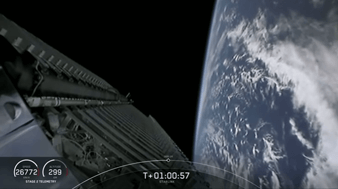
Got to know how many Starlink satellites SpaceX has in orbit?
+ + Go to Jonathan's Space Page and check out the Starlink Statistics page!
Scroll down and check the large table, "Summary status table".
The first column shows how many have been launched in total, the Total In Orbit column shows how many are actual in orbit and at work as of the table's current date.
As of August 8, 2023, there are 4575 Starlink satellites in orbit.
Thank you, Jonathan McDowell!
Starshield
Starshield is a constellation of satellites that SpaceX is developing that is based on the Starlink communication satellite technology. This version of the satellite is made for military intelligence uses such as target tracking, optical and radio reconnaissance, and early missile warning. The National Reconnaissance Office (NRO) and the United States Space Force (USSF) have also added Northop-Grumman to work with SpaceX to ensure that the program has more than one contractor.
There is not much public knowledge about the design and specifications of the Starshield satellites. There have been Falcon 9 launches of Starshield proto-types and operational satellites since 2020.
Starman
Starman was launched by SpaceX on the Falcon Heavy test flight on February 6, 2018 as a dummy payload. In order to test the rocket's capability, Elon Musk sacrificed his midnight cherry 2008 Tesla Roadster. It was mounted on the rocket's second stage. In the driver's seat of the Roadster is a mannequin wearing a SpaceX pressure spacesuit. He has been named "Starman" in honor of David Bowie's famous song, "Starman". Starman and the roadster have been placed in an orbit around the Sun that approaches both Earth and Mars orbit every 6 years.
Other articles aboard the Starman space car include a copy of Douglas Adams' novel, "The Hitchhiker's Guide to the Galaxy" in the glovebox and a "Don't Panic!" sign on the dashboard, a Hot Wheels Roadster with a miniature Starman mounted on the dashboard, a message on the Roadster's circuit board stating "Made on Earth by humans". The car also carries a copy of Isaac Asimov's Foundation trilogy on a 5D-optical disc, and a plaque with the names of the SpaceX employees who worked on the project.
Just for fun, check out The Sky Live where there is a webpage devoted to Starman so you can find its current location and magnitude.
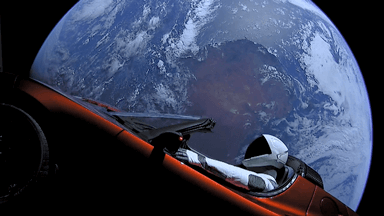
Floating Launch Platforms
SpaceX bought two oil drilling platform rigs from Valaris, PLC for $3.5 million each through its subsidiary, Lone Star Mineral Development LLC in July 2020. The nearly identical rigs were renamed Deimos and Phobos after the two moons of Mars. The drilling platforms had previously been named ENSCO/Valaris 8500 and 8501. The oil rigs were to be modified to be used by SpaceX as floating launch platforms. Plans changed and the oil rigs were scrapped by SpaceX in early 2023.

Starship
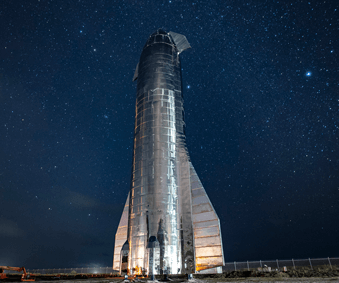
By most accounts, Elon Musk has wanted to see humans settle on the distant red planet, Mars, for many years. For this purpose, a huge vessel known as Starship is being developed at SpaceX's facility in Boca Chica, TX. For this giant rocket, SpaceX has built a new engine, the Raptor. Since 2019, prototypes of Starship have been built by SpaceX and tested. Since colonizing Mars has been a life-long dream for me, the saga of Starship by SpaceX is worthy of its very own page at Astra's Stargate.
Having seen the progress of SpaceX on Elon Musk's journey to Mars, I am totally convinced that Elon will make his dreams come true. Built from scratch, the Falcon 9 rocket has proven its reliability in well over 300 successful launches.
Astra's Stargate has a page on SpaceX's Starship covering the program in depth. The Starship must first reach low earth orbit, be refueled, and then move on to the Moon. NASA has chosen Starship to be the Artemis lunar lander. An additional page covers Starship Prototype Testing with a detailed account of each launch.
Starship is a two-stage system, built of stainless steel. The current design of the first stage Super Heavy booster, is powered by 33 Raptor engines using liquid methane (CH4) and liquid oxygen (LOX). Super Heavy will be fully reusable and will re-enter Earth’s atmosphere and land back at the launch site, being caught by the launch tower arms. It stands 71 meters or 232 feet tall. Its diameter is 9 m or 29.5 ft. The Starship upper stage will be a fully reusable spacecraft and will be reconfigurable. It will have an integrated payload section and be capable of carrying crew and cargo to Earth orbit, the Moon, Mars and beyond. starship is 50 m or 165 ft. high and 9 m or 29.5 ft. in diameter. The upperstage is covered with heat tiles for re-entry. For stage separation, it uses a hot-staging system.
Read about the dearMoon mission, planned in 2023 to send civilians on a trip around the Moon, that was unfortunately cancelled. As I tried to enter the contest, I have left the Dear Moon page up at Astra's including my artwork, the list of winners, and biographical information.
+ + Find out more @ Astra's about Starship

Starship at the Moon
NASA awarded SpaceX a firm, fixed price, milestone-based contract total award value of $2.89 billion on April 16, 2021. Subsequent protests were filed by Blue Origin and Dynetics but the Government Accountability Office (GAO) reviewed the protest claims and found that NASA did not violate procurement law on July 30, 2021. It is not unusual for such protests to be filed, especially for large contracts. I believe NASA chose SpaceX because of its record of delivering the products and services.
Previously, in April 2020, Along with 2 other proposals, SpaceX was awarded a $135 million contract under NASA's Artemis Human Landers program to develop a lunar-optimized variant of its Starship spacecraft. NASA plans to return humans to the moon by 2025 under the Artemis program. The SpaceX proposal included in-space propellant transfer demonstrations, a technology SpaceX will have to develop for future Starship missions to the Moon or Mars. SpaceX also must complete an uncrewed lunar test landing.
+ + Find out more about the Starship Human Landing System at Astras.
Astra's Stargate maintains SpaceX Information Links
Go to Astra's SpaceX Index

Dragon leaving SpaceX HQ, February 23, 2015.
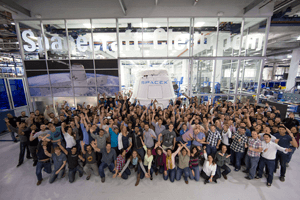
Thanks for your efforts! The Dragon only flies with all-hands support. The future of space is right here on Earth!
Please note that many of the images on the SpaceX pages at Astra's are available at SpaceX Flickr site where they have been released into the public domain. Some have been modified to fit the available space at the Stargate site by cropping and/or optimization so for best practices please use the official site. This webpage is ©2021-2023 D. E. Jenkins all rights reserved. Please use the contact page to get permission to use this content or to send comments or corrections.
Disclaimer: This webpage is not affiliated with SpaceX and all text and opinions are my own.
I'm a rocket fan! - - Astra
#AstrasStargate #ImaRocketFan
Navigation at Astra's Star Gate
[ Astronomy ] [ Space ] [ StarWimin ] [ NE Asteroid ] [ Ancient Astronomy ] [ Observers ] [ What's Up? almanac ]


